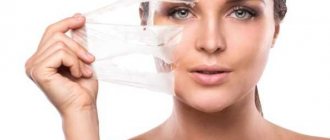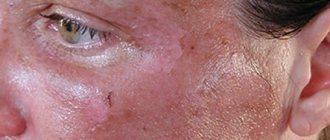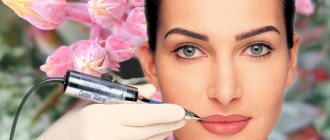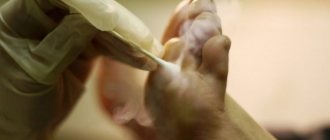Is it worth piercing a callus?
A callus is an unpleasant skin lesion that occurs due to rubbing with shoes, gloves or clothing. The formation is characterized by swelling, inflammation and severe redness.
The bubble resolves within a few days. Interstitial fluid flows out of it.
What happens if you puncture a callus?
If you pierce it, the following will happen:
- The liquid will flow to the surface of the skin.
- The skin covering the callus falls off.
- The pain goes away because there is no longer the tension caused by the fluid accumulated inside the callus.
- You can now step on your sore leg again.
On the other hand, after a puncture a wound is formed.
She needs to be looked after.
Otherwise, infection may occur.
Causes of calluses
If calluses appear too often, then it is worth studying all the reasons for their occurrence. This may not only be tight shoes, but also problems with internal organs and the endocrine system. The influence of papillomavirus is also possible. In our clinic you can find out the specific cause of calluses and receive specialist recommendations.
Stages of callus development
The longer you suffer from a callus, the more likely it is to cause complications. There are 3 stages in the development of growth:
- wet;
- dry;
- core.
Should a baby's water blister be pierced?
Children are in places that are not the most sterile.
It is difficult to keep track of a school-age child.
It is unlikely that it will be possible to control it constantly.
Therefore, you need to understand that sooner or later the child will damage the callus.
This is unlikely to happen under aseptic conditions.
And it is unlikely that at this moment the baby would have cotton wool with brilliant green in his hand.
Therefore, the wound will not be treated.
An infection can get inside.
In the future, suppuration is possible.
To avoid all these consequences, it is better to pierce a large callus immediately, treat it with antiseptics, and then cover it with a band-aid.
After a few days, the damaged area will heal.
Children's skin heals faster than adults'.
First aid for a burst callus
The damage must be treated. If you know that a blister on the skin can burst at any moment, it is better to cauterize it with iodine or seal it with an antibacterial special plaster.
Common pharmaceutical products include:
- Salicylic ointment 10%. The drug must not be combined with other drugs or used for more than three weeks.
- Levomekol. An antibacterial agent that can be applied under a sterile bandage.
- Syntomycin. Has a cooling and analgesic effect.
How to pierce a callus incorrectly?
So, you decided to pierce the callus.
You should immediately familiarize yourself with the main mistakes made by those who get a puncture for the first time.
Let's talk about how a careless “self-taught surgeon” punctures a callus on the foot.
He does this as follows:
- He takes the first needle he comes across.
- To keep it clean, wash it with water or wipe it on your pants.
- Takes off shoes on unwashed feet.
- With a flourish he thrusts the needle into the very center.
- He tries to quickly squeeze out the liquid from the callus by pressing on it with his finger.
- Wipe the problem area with a napkin.
- He puts on a sock and goes about his business.
It is likely that even this approach will lead to success.
But at each stage, serious mistakes were made that could lead to complications.
Basic rules of asepsis and antiseptics are not followed.
Incorrect puncture technique can lead to damage to the deep layers of the skin, which can lead to scarring.
Squeezing out the fluid can cause rupture of the skin covering the callus, which protects the wound from infection.
After the puncture, the wound is not treated or covered with a plaster.
Choosing the right shoes
The best measure to prevent any corns is to wear comfortable, proper shoes. You should buy it in the late afternoon, when the leg is slightly enlarged in size, and not in the morning. If you are prone to chafing, it is better to wear dress shoes for no more than 1–2 hours or avoid them altogether.
Before a long walk, you should wear shoes without rough seams, raised parts or holes; the ideal option is comfortable sneakers. You should always have plasters with you - if there is mild pain, you can seal the problem area of the leg, and a callus will not appear on it.
How to properly pierce a callus?
Now let's talk about how to pierce a callus correctly to prevent complications.
- Take a needle without a cavity. The cavity is contained in a syringe needle. There is no cavity in a surgical or sewing needle. Most people do not have surgical needles at home. But there is always a sewing room. It is quite suitable for performing a puncture.
- Sterilize the needle. To do this, just dip it in alcohol.
- Treat the area of the upcoming puncture with an antiseptic. Iodine or alcohol will do. Wash your hands thoroughly and wear rubber gloves. If you don’t want to run to the pharmacy to get them, at least wipe your hands with alcohol.
- Make a puncture not in the center, but on the side of the callus. Insert the needle not at a right angle, but almost horizontally. This will avoid unnecessary damage to the skin.
- The liquid should come out on its own. And if it comes out too slowly, make another puncture. If the hole is small, there is no point in pressing on the callus. Because due to increased pressure, the skin will simply burst. As a result, instead of a small hole in the skin, a wound is formed, which will subsequently take longer to heal and may become infected. If the hole in the skin is sufficient or there are several of them, you can press on the callus. But this can only be done with a sterile napkin. If it is initially non-sterile, it should be soaked in an antiseptic solution.
- After all the liquid has come out, treat the affected area with iodine.
- Apply germicidal patch. You can use a regular patch, but it must be sterile.
Calluses that cannot be pierced
As mentioned earlier, it is forbidden to touch blood and purulent blisters yourself, and if they appear, you should consult a doctor. Particular attention should be paid to calluses that:
- Causes severe sharp pain.
- After touching they pulsate.
- Surrounded by bruise.
- Size exceeds 5 cm.
- Defined as core corns. Their removal from the skin is permitted only by surgery or laser.
Does it hurt to pierce a callus on your foot?
The puncture may be somewhat painful.
But this pain will not be very strong and short-lived.
After the puncture, the pain will decrease.
Because the pressure exerted on the tissue by the liquid contained inside will go away.
There will be no pain when walking, or it will become very weak.
The puncture site will heal quickly.
In the future, pain is possible only if the callus becomes inflamed.
There are also cases when a callus forms in the same place after a short time.
She fills up with fluid again.
In this case, the puncture should be repeated.
For large calluses, it is better to consult a doctor.
Is it worth getting pierced?
Experts disagree on whether it is possible to pierce a callus at home. Some say that this will speed up healing and help get rid of pain and discomfort. It is recommended to open drops that are too large and those that can rupture on their own. Then why is it forbidden to pierce a water callus? Some doctors argue that the appearance of such formations is a natural protective reaction of the body, and if the bubble is punctured, an open wound will remain in its place - a gateway to numerous infections. So, when opening blisters on your own, you need to provide proper care and take care to disinfect the instrument and skin in order to protect yourself from inflammation and abscesses.
I pierced a callus - what to do?
It happens that the callus is punctured by accident.
It bursts and liquid pours out.
At this moment the person feels pain.
In such a situation, the risk of infectious complications is higher.
But it can be reduced if you take action immediately after the callus ruptures.
You need to do the following:
- Treat the skin with an antiseptic. For example, iodine or hydrogen peroxide.
- Cover the problem area with cotton wool and antibacterial ointment. The pharmacy sells antibiotics. For example, Levomekol or tetracycline ointment. Antiseptics will also work. Do not use the solution. You only need to apply the ointment under the bandage. Otherwise it will dry out. It will have to be soaked or peeled off along with the skin.
- Treat with iodine once a day until healing. In most cases, these measures prevent infectious complications. But if signs of inflammation still appear, you should see a doctor. The wound may need to be treated. Otherwise, a purulent focus may form.
Proper opening of the callus
The procedure for removing a blister at home must be done extremely carefully. It should be pierced approximately 1–2 days after its appearance, no later. The procedure is as follows:
- It is necessary to treat the surface of the skin before puncture - hydrogen peroxide and alcohol are used for this purpose.
- Wash your hands thoroughly with soap and dry with a clean towel.
- Wipe the needle (ordinary sewing pin, safety pin) well with alcohol or heat it with fire.
- Make a puncture at the bottom of the callus, without touching the inflamed skin inside it (“bottom”), as this can cause infection. All callused skin should remain intact. It is better to pierce large blisters from below and above.
- Moisten all escaping water with cotton wool.
- Press the skin to the damaged area using cotton wool soaked in antiseptic.
- Thoroughly treat the wound and skin around the blister with brilliant green or apply Tetracycline ointment, Levomekol or another antibacterial agent (alcohol should not be used).
- Apply a patch to the problem area and apply a bandage to the large callus. It needs to be changed 2 times a day.
Usually, after 3 days, the skin around the callus completely dies, the wound heals, so the bandage must be removed. The dead skin should be carefully cut off.
Is it possible not to pierce the callus?
There is no need to puncture the callus if you think that it will definitely not rupture on its own.
This is possible if the callus is very small or is located on a non-load-bearing area of the body.
True, this rarely happens.
After all, education is formed precisely because of constant or short-term excess load.
If the callus is not punctured, it will disappear within a week.
But if you believe that there is a risk of rupture, it is better to still perform a puncture.
If you do this in a timely manner, under sterile conditions, with sterile instruments, then with a probability close to 100%, you will be able to avoid infectious complications.
Causes of calluses
Human skin is a thin layer of tissue that is easily damaged. Increased friction leads to hardening of the dermis. Cells do not have time to recover and change. The appearance of corns can be associated with uncomfortable shoes - wearing heels requires you to monitor the condition of your feet. Stiletto heels have a negative effect - they compress the forefoot, and girls find deep corns near their toes. Active movement has a similar effect: calluses can appear on the skin of the toes.
For a person with a congenital foot deformity, the occurrence of calluses may become commonplace, but even if they appear frequently, they should not be treated negligently.
Carrying out the procedure
Liquefied nitrogen in liquid form is located in a special vessel, it is equipped with a nozzle. Thanks to the nozzle, the cold affects only specific areas of the skin. Tips of different sizes are selected. Throughout the entire session, liquid nitrogen is applied to the callus 5–7 times for several seconds. After the procedure (after 1–3 days), a bubble with a liquid substance inside forms at the site of the callus. After 2-3 days, the bubble will open on its own and the wound will heal. Under no circumstances should you open or puncture the bladder yourself, so as not to cause an infection.
Care after callus removal
After deletion, you should adhere to several rules:
- maintain hygiene and wear only clean socks;
- wound treatment with Chlorhexidine;
- you need to cover the area with adhesive tape so that the sticky part does not touch the wound;
- use softening ointments;
- wear orthopedic insoles.
After removing the callus, after 2-3 weeks there will be no trace left on the skin. A person no longer feels pain and discomfort when walking, and there is no need to worry about getting an infection. The problem of aesthetic defect is also solved.










